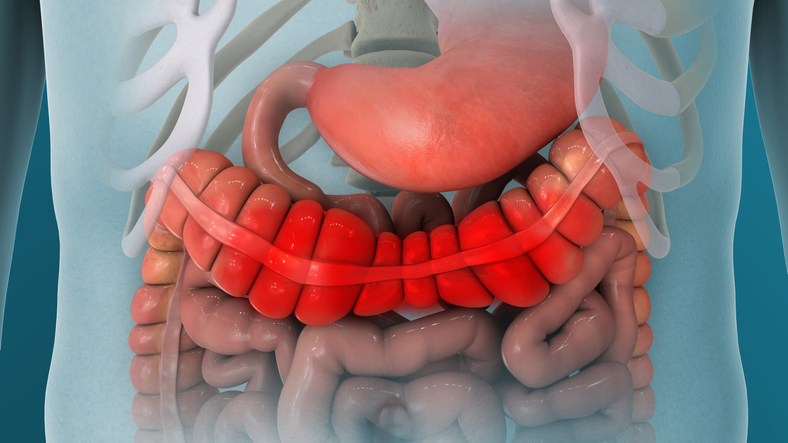Patients with elevated levels of antibodies to novel biomarker SITH-1 were significantly more likely to have disease activity.
Past research has suggested that infection of the colon with HHV-6B may be linked to ulcerative colitis (UC). In particular, HHV-6B DNA has been found in the wall of the colon, although less often than DNA for Epstein-Barr virus and human cytomegalovirus are found—and not clearly more often in UC than in healthy control subjects. (Hosomi 2018)
A team from Saitama and Tokyo, Japan, decided to assess whether reactivation of HHV-6B—as determined by anti-SITH-1 antibody titers—correlated with exacerbations (flares) of disease activity of UC, in a longitudinal study. SITH-1 was discovered and patented by senior author Kazhuhiro Kondo, MD, PhD of Jikei University School of Medicine in Japan of stands for “small protein encoded by intermediate state transcript”.
The group followed 107 patients with UC. At the outset of the study, they identified which patients had detectable antibodies to SITH-1 (the SITH-1 positive group) and which did not (the SITH-1 negative group). Then they followed the patients for at least 6 months, and determined all episodes of disease exacerbation.
At baseline, the SITH-1 positive group was similar to the SITH-1 negative group with respect to many demographic, clinical and laboratory factors: age, gender, body mass index, history of depression, past history and extent of disease, past surgery, past and current treatments for UC and white blood cell count. However, over the next six months all disease exacerbations occurred in those patients who were SITH-1 positive—a significant difference from those who were SITH-1 negative: the area under the ROC curve was 0.81 (Figure 1). Furthermore, SITH-1 levels were significantly higher in the exacerbation group (4.90) than in the non-exacerbation group (1.71) (P < 0.001).

In contrast, in a group of 56 patients with another form of inflammatory bowel disease—Crohn’s disease—there was no such association with SITH-1 levels and disease exacerbation.
This study suggests that reactivation of HHV-6B may be correlated with exacerbations of disease activity in some people with ulcerative colitis. This conclusion would be made stronger by showing that reactivation of EBV and HCMV, both of which reportedly infect colon mucosa more often than HHV-6B, was not correlated with exacerbations of disease activity.
If reactivation of HHV-6B infection in the colon does, indeed, prove to cause exacerbations of ulcerative colitis, then antiviral therapy—guided by antibody levels to SITH-1 protein as a biomarker indicating people at increased risk—might someday prove to have a role in preventing disease flares.
A previous study led by Professor Kondo found SITH-1 antibodies in 80% of depressed patients compared to 24% of controls, and that HHV-6B protein triggered apoptosis of hippocampal neurons and induced prolonged activation of the HPA axis in mice. These findings suggested to the investigators that SITH-1 it may play a role in chronic fatigue syndrome, depression and psychiatric disorders (Kobayashi 2020).
Read the full article: Matsumoto 2023

